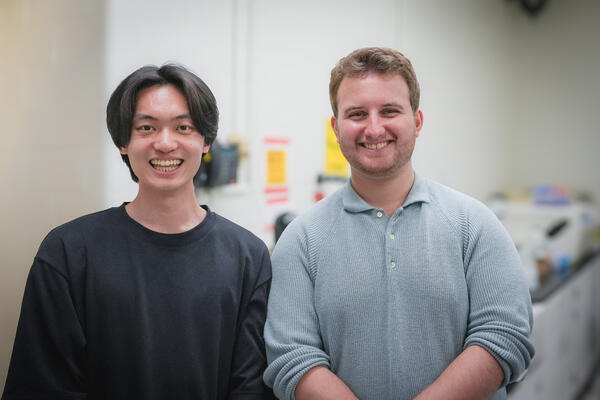
Battery research could triple range of electric vehicles
New research at the University of Waterloo could lead to the development of batteries that triple the range of electric vehicles

New research at the University of Waterloo could lead to the development of batteries that triple the range of electric vehicles
By Media RelationsThe breakthrough involves the use of negative electrodes made of lithium metal, a material with the potential to dramatically increase battery storage capacity.
“This will mean cheap, safe, long-lasting batteries that give people much more range in their electric vehicles,” said Quanquan Pang, who led the research while he was a PhD candidate in chemistry at Waterloo.
The increased storage capacity, or energy density, could boost the distance electric vehicles are able to travel on a single charge, from about 200 kilometres to 600 kilometres.
In creating the technology, Pang and fellow researchers, including supervisor Linda Nazar, a professor of chemistry at Waterloo and a Canada Research Chair in Solid State Energy Materials, had to overcome two challenges.
The first challenge involved a risk of fires and explosions caused by microscopic structural changes to the lithium metal during repeated charge-discharge cycles.
The second involved a reaction that creates corrosion and limits both how well the electrodes work and how long they last.
Researchers solved both problems by adding a chemical compound made of phosphorus and sulfur elements to the electrolyte liquid that carries electrical charge within batteries.
The compound reacts with the lithium metal electrode in an already assembled battery to spontaneously coat it with an extremely thin protective layer.
“We wanted a simple, scalable way to protect the lithium metal,” said Pang, now a post-doctoral fellow at the Massachusetts Institute of Technology. “With this solution, we just add the compound and it works by itself.”
The novel approach paves the way for electric vehicle batteries that enjoy the benefits of lithium metal electrodes – greater storage capacity and therefore greater driving range – without compromising safety or reducing lifespan.
Nazar is also a a member of the Order of Canada, a member of the Waterloo Institute for Nanotechnology and cross-appointed to the departments of Physics and Astronomy and Chemical Engineering.
A paper on the research was published today in the journal Joule.

Read more
Velocity pitch competition winners share exciting startup ideas using artificial intelligence and deep tech, showcasing creativity and entrepreneurial prowess

Read more
Waterloo students earn more than $700,000 in grants to scale their research efforts on lab-grown fish

Read more
Modular software brings together a variety of expertise to create a new method to realistically model and analyze quantum cryptography
The University of Waterloo acknowledges that much of our work takes place on the traditional territory of the Neutral, Anishinaabeg, and Haudenosaunee peoples. Our main campus is situated on the Haldimand Tract, the land granted to the Six Nations that includes six miles on each side of the Grand River. Our active work toward reconciliation takes place across our campuses through research, learning, teaching, and community building, and is co-ordinated within the Office of Indigenous Relations.